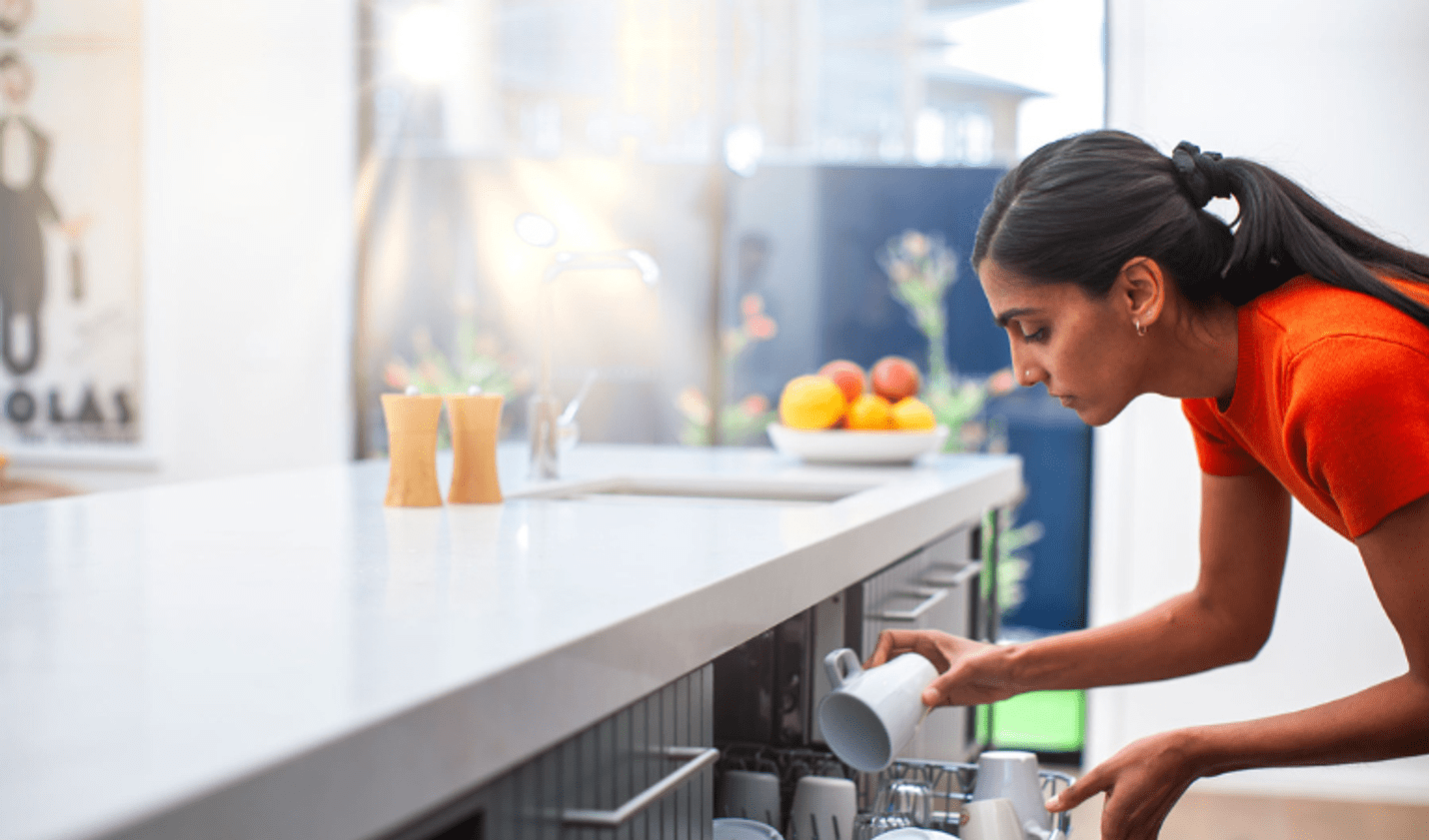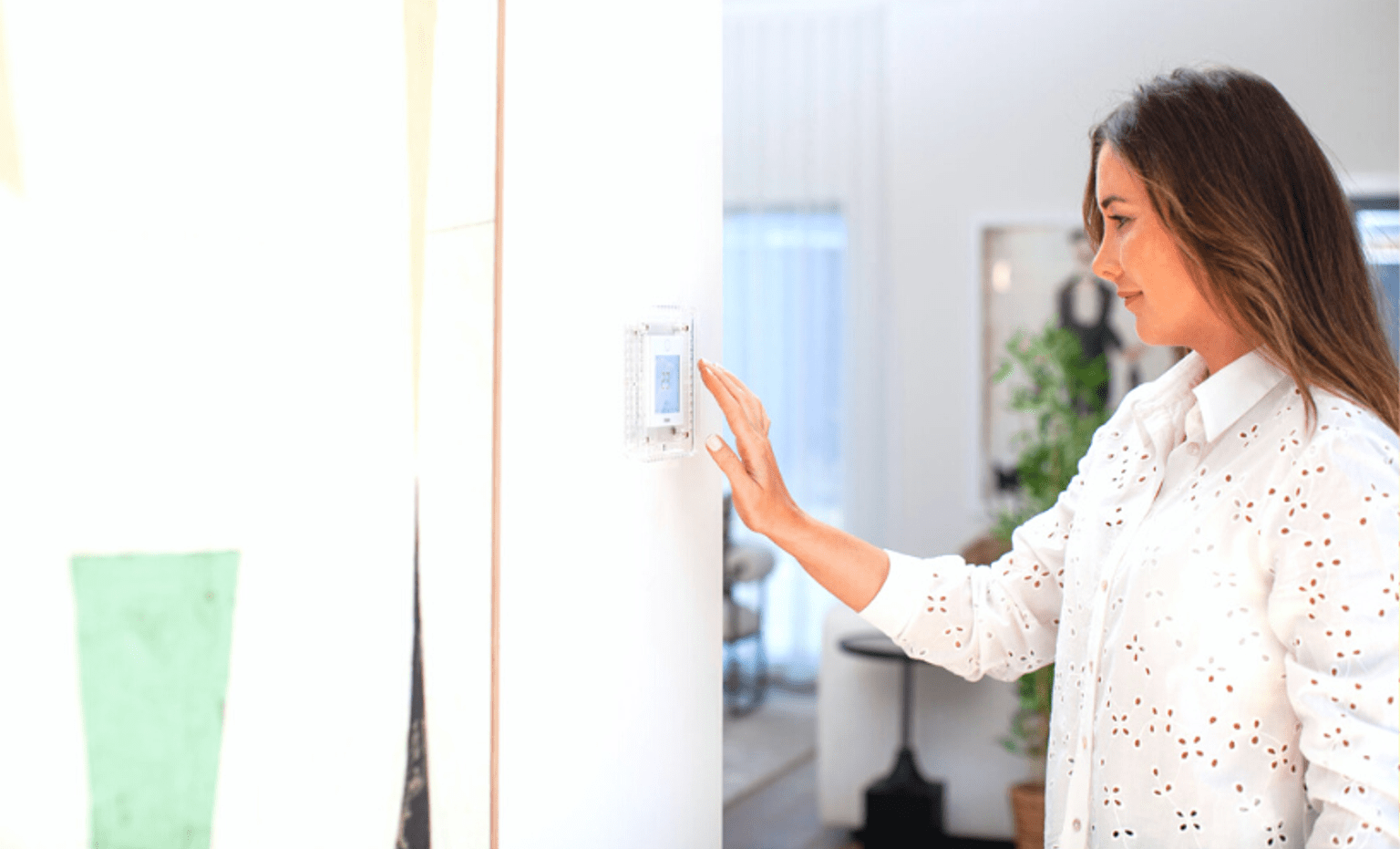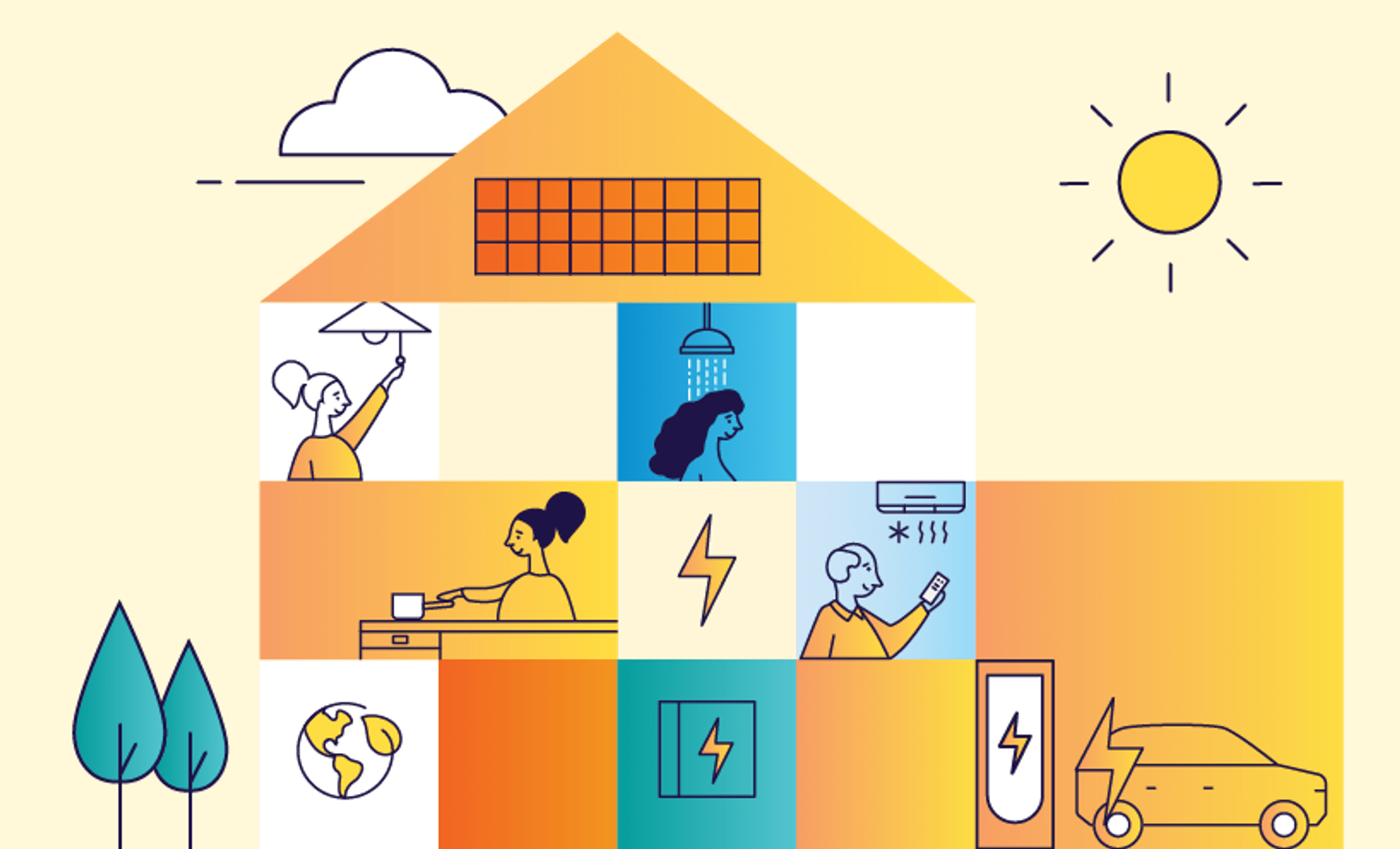Household energy use is a big contributor to Victoria’s greenhouse gas emissions.
Our grid is transitioning from fossil fuels to renewables, so all Victorian homes will eventually be powered by clean energy sources. This is key to achieving the state’s ambitious target of net zero by 2045.
You can manage your energy use, make your home more energy-efficient and power it with renewable energy to reduce your carbon emissions and help cut your power bills as well.
Change small habits to reduce energy use
The easiest place to start is by considering your small but frequent actions.
- Wash clothes in cold water.
- Hang your washing to dry.
- Only run full loads in the washing machine and dishwasher.
- Turn off appliances and lights when you’re not using them.
- Put on extra layers of clothing before turning on the heater.
- Set your heating to between 18 and 20 °C in winter, and air con to between 23 and 26 °C in summer.
Reduce your home’s heating and cooling needs
Imagine being more comfortable in your home all year round, and having lower energy bills at the same time. It is possible to achieve both.
Good draughtproofing and insulation will help maintain a comfortable temperature inside, so you don’t need to blast the air con or heater.
- Use draught stoppers under doors. You can buy door snakes for under $10, or simply roll up a towel.
- Close blinds and curtains after dark, and to block out sunlight on hot days.
- Add draught seals to exhaust fans, and duct covers to unused evaporative air con outlets.
- Seal gaps around windows and doors.
- Seal off chimneys.
- Install thick curtains.
- Add insulation to ceilings, walls and underfloor spaces.
Upgrade to energy-efficient appliances
When the time comes to replace appliances like whitegoods, heating and cooling, and hot water systems, choose the most energy-efficient options you can afford.
- Many household appliances like TVs, fridges, washing machines, dryers and dishwashers have an Australian energy rating to compare performance of similar products.
- Different types of heating and cooling systems can drastically affect your energy use. Reverse-cycle air conditioners can also be used for heating, and they’re far more energy-efficient than alternatives like gas ducted heating.
- Similarly, hot water heat pumps are a reliable, energy-efficient hot water system.
- Induction cooktops are rising in popularity. They’re cheap to run, safe, and easy to cook with and clean.
Upgrading major appliances can be a big expense – but you don’t want to be caught out when they break down. Plan ahead to invest in these when your current systems are reaching the end of their lives.
The Victorian Energy Upgrades program offers discounts to lower the cost of several energy-efficient appliances.
Choose green energy
You can use the Victorian Energy Compare website to find electricity offers in your area, with costs estimated based on your past usage, and filter the results to only show green offers.
GreenPower is a national program that helps energy customers buy renewable electricity. It costs a bit extra (a few cents per kWh), but choosing it helps drive demand for green energy, create jobs and build new renewable energy infrastructure.
Get solar
Installing a solar PV system allows you to generate your own renewable energy from your rooftop during the daytime. You can save money every day as you use free electricity from your solar panels instead of buying it from the grid.
If you also install a solar battery, you can store solar power that isn’t used straight away for when you need it (like at night). Depending on the capacity of your system and your household energy needs, you could cover all or most of your own energy needs with solar.
You can also connect your battery to a virtual power plant (VPP), which enables the power you have stored to be shared with the community at times of high demand – helping to stabilise the grid and ensure a reliable power supply for everyone.
We offer solar PV rebates to help reduce the upfront costs for eligible Victorian households. Join more than 700,000 households across the state who are already enjoying the benefits of solar.
Go all-electric
With electric hot water, heating and cooking systems in place, you can disconnect from the gas grid. And if your home is 100% powered by rooftop solar, your energy use will be carbon neutral.

From cutting costs to carbon emissions: 5 powerful reasons to electrify your home
Every day, more Australians are making the shift to all-electric homes. Thinking about making the switch, too?
Think about transport
If you’re shopping for a new car, consider an electric vehicle. The number of EVs on Australian roads is growing fast, and so is the infrastructure to support them. Over a few years, they are cheaper to run and have much lower emissions (even on energy grids that aren’t fully powered by renewables). With solar panels, you could even charge up your car for free at home.
Otherwise, you might aim to reduce emissions by replacing car journeys with active or public transport when it’s practical. Walk, roll or ride to enjoy some fresh air and exercise on short trips.
What about carbon offsetting?
To reach net zero, it’s important that we reduce actual emissions as much as possible. Making your home energy efficient and powering it with renewable energy is a great place to start.
Beyond that, you could consider contributing to carbon offset programs. These programs put your money towards initiatives that lower emissions, like tree planting or renewable energy projects.
Get started
A Residential Efficiency Scorecard assessment rates your home's energy use and comfort, and provides tailored recommendations for improvements. The Victorian Energy Upgrades program offers rebates for Scorecard assessments.
Alternatively, some local libraries loan out energy efficiency toolkits for do-it-yourself assessments.
To learn more about energy-efficient upgrades for your home, browse our Solar Hub.
Updated




